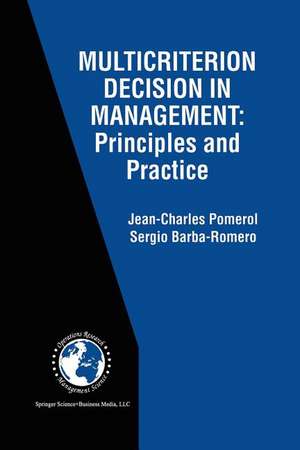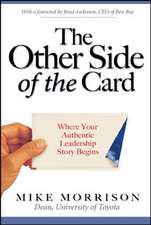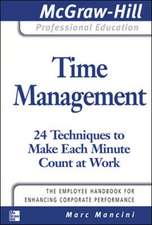Multicriterion Decision in Management: Principles and Practice: International Series in Operations Research & Management Science, cartea 25
Autor Jean-Charles Pomerol, Sergio Barba-Romeroen Limba Engleză Paperback – 4 oct 2012
The book concentrates on the basic principles in the domain of discrete multicriterion analysis, and examines each of these principles in terms of their properties and their implications. In multicriterion decision analysis, any optimum in the strict sense of the term does not exist. Rather, multicriterion decision making utilizes tools, methods, and thinking to examine several solutions, each having their advantages and disadvantages, depending on one's point of view. Actually, various methods exist for reaching a good choice in a multicriterion setting and even a complete ranking of the alternatives. The book describes and compares these methods, so-called `aggregation methods', with their advantages and their shortcomings. Clearly, organizations are becoming more complex, and it is becoming harder and harder to disregard complexity of points of view, motivations, and objectives. The day of the single objective (profit, social environment, etc. ) is over and the wishes of all those involved in all their diversity must be taken into account. To do this, a basic knowledge of multicriterion decision analysis is necessary. The objective of this book is to supply that knowledge and enable it to be applied.
The book is intended for use by practitioners (managers, consultants), researchers, and students in engineering and business.
| Toate formatele și edițiile | Preț | Express |
|---|---|---|
| Paperback (1) | 950.03 lei 6-8 săpt. | |
| Springer Us – 4 oct 2012 | 950.03 lei 6-8 săpt. | |
| Hardback (1) | 958.73 lei 6-8 săpt. | |
| Springer Us – 29 feb 2000 | 958.73 lei 6-8 săpt. |
Din seria International Series in Operations Research & Management Science
- 20%
 Preț: 331.25 lei
Preț: 331.25 lei - 20%
 Preț: 570.61 lei
Preț: 570.61 lei - 18%
 Preț: 1132.02 lei
Preț: 1132.02 lei - 18%
 Preț: 773.72 lei
Preț: 773.72 lei -
 Preț: 170.39 lei
Preț: 170.39 lei - 17%
 Preț: 459.34 lei
Preț: 459.34 lei - 17%
 Preț: 360.47 lei
Preț: 360.47 lei -
 Preț: 263.40 lei
Preț: 263.40 lei - 24%
 Preț: 905.30 lei
Preț: 905.30 lei - 17%
 Preț: 460.08 lei
Preț: 460.08 lei - 17%
 Preț: 459.34 lei
Preț: 459.34 lei - 20%
 Preț: 631.58 lei
Preț: 631.58 lei - 13%
 Preț: 448.62 lei
Preț: 448.62 lei - 18%
 Preț: 738.28 lei
Preț: 738.28 lei - 18%
 Preț: 1225.94 lei
Preț: 1225.94 lei - 18%
 Preț: 948.92 lei
Preț: 948.92 lei - 18%
 Preț: 703.88 lei
Preț: 703.88 lei - 18%
 Preț: 957.44 lei
Preț: 957.44 lei - 15%
 Preț: 651.84 lei
Preț: 651.84 lei - 20%
 Preț: 336.21 lei
Preț: 336.21 lei - 15%
 Preț: 641.03 lei
Preț: 641.03 lei -
 Preț: 404.29 lei
Preț: 404.29 lei - 18%
 Preț: 950.21 lei
Preț: 950.21 lei - 15%
 Preț: 649.06 lei
Preț: 649.06 lei - 18%
 Preț: 725.75 lei
Preț: 725.75 lei -
 Preț: 394.12 lei
Preț: 394.12 lei - 18%
 Preț: 951.47 lei
Preț: 951.47 lei - 15%
 Preț: 639.59 lei
Preț: 639.59 lei - 18%
 Preț: 773.06 lei
Preț: 773.06 lei - 18%
 Preț: 889.29 lei
Preț: 889.29 lei - 15%
 Preț: 655.60 lei
Preț: 655.60 lei - 15%
 Preț: 640.06 lei
Preț: 640.06 lei - 15%
 Preț: 583.93 lei
Preț: 583.93 lei
Preț: 950.03 lei
Preț vechi: 1158.57 lei
-18% Nou
Puncte Express: 1425
Preț estimativ în valută:
181.81€ • 189.57$ • 151.10£
181.81€ • 189.57$ • 151.10£
Carte tipărită la comandă
Livrare economică 20 martie-03 aprilie
Preluare comenzi: 021 569.72.76
Specificații
ISBN-13: 9781461370086
ISBN-10: 1461370086
Pagini: 412
Ilustrații: XIII, 395 p.
Dimensiuni: 155 x 235 x 22 mm
Greutate: 0.58 kg
Ediția:Softcover reprint of the original 1st ed. 2000
Editura: Springer Us
Colecția Springer
Seria International Series in Operations Research & Management Science
Locul publicării:New York, NY, United States
ISBN-10: 1461370086
Pagini: 412
Ilustrații: XIII, 395 p.
Dimensiuni: 155 x 235 x 22 mm
Greutate: 0.58 kg
Ediția:Softcover reprint of the original 1st ed. 2000
Editura: Springer Us
Colecția Springer
Seria International Series in Operations Research & Management Science
Locul publicării:New York, NY, United States
Public țintă
ResearchCuprins
1 What is multicriterion decision making?.- 1.1 Choice in the presence of multiple criteria.- 1.2 Historical background.- 1.3 The role of multicriterion analysis in organizations.- 1.4 An example to introduce some basic notions.- 1.5 Continuous multicriterion decision-making.- 1.6 How to use the book.- 2 Basic principles and tools.- 2.1 The discrete multicriterion decision (DMD) paradigm.- 2.2 The decision maker’s preferences and order relations.- 2.3 Preorders and utility functions.- 2.4 Ordinal and cardinal utility functions and evaluation of alternatives.- 2.5 Semi-criteria and pseudo-criteria.- 2.6 Models and aims of multicriterion decision making.- 2.7 Evaluation of alternatives and normalization.- 3 Analysis of dominance and satisfaction.- 3.1 Product preorders and dominance.- 3.2 Cones and preorders.- 3.3 Pre-analysis of dominance.- 3.4 Pre-analysis of satisfaction.- 3.5 Methods of discrete multicriterion decision.- 4 Weighting methods and associated problems.- 4.1 Weights and weighted sums.- 4.2 Geometrical interpretation.- 4.3 Determining weights.- 4.4 The entropy method.- 4.5 Direct evaluation methods.- 4.6 Eigenvalue methods.- 4.7 Methods of comparison of alternatives.- 4.8 Other problems.- 5 Ordinal multicriterion methods.- 5.1 Introduction.- 5.2 Borda’s method.- 5.3 The Condorcet method.- 5.4 Social choice and Arrow’s theorem.- 5.5 The method of Bowman and Colantoni.- 5.6 Lexicographic methods.- 6 Additive utility functions and associated methods.- 6.1 Introduction.- 6.2 The problem of comparing utilities.- 6.3 Definition and cardinality of additive utility functions.- 6.4 Difference additivity models.- 6.5 The existence of additively separable utility functions.- 6.6 Constructing additive utilities.- 6.7 The UTA method.- 7 Outranking methods.- 7.1Introduction.- 7.2 Outranking relations.- 7.3 The Electre method.- 7.4 The Promethee method.- 7.5 Other methods.- 8 Other multicriterion decision methods.- 8.1 Introduction.- 8.2. Alternative comparison methods.- 8.3. Methods involving distance from an ideal alternative.- 8.4 Permutation methods.- 8.5 Miscellaneous methods.- 9 Computers, Artificial Intelligence, Interactivity and Multicriterion Decision.- 9.1 The complexity of calculations.- 9.2 Artificial intelligence (AI) and multicriterion decision.- 9.3 Interactivity.- 9.4 Interactive multicriterion methods.- 9.5 Incorporation of multicriterion methods in DSS.- 9.6 Conclusion.- 10 Software for discrete multicriterion decision.- 10.1 Introduction.- 10.2 Logical Decisions.- 10.3 Promcalc.- 10.4 Expert Choice.- 10.5 Qualiflex.- 10.6 Brief review of DMD software.- 11 Multicriterion decision in practice.- 11.1 The role of multicriterion decision in descriptive models of human decision.- 11.2 People and timing in multicriterion decision.- 11.3 On modeling.- 11.4 From aggregation to choice.- 11.5 Reactions of decision makers to multicriterion decision.- 11.6 Applications.- 12 Multicriterion methods: features and comparisons.- 12.1 Introduction.- 12.2 A theoretical framework for analyzing the desirable properties of choice functions.- 12.3 Empirical comparison of practical properties.- 12.4 Comparison of multicriterion aggregation procedures: the various factors to be considered.- 12.5 The specialist’s point of view: choice of a method in terms of information available and terms of reference.- 12.6 Choice of method: the user’s point of view.- 12.7 Conclusion.- References.- Author Inde.















